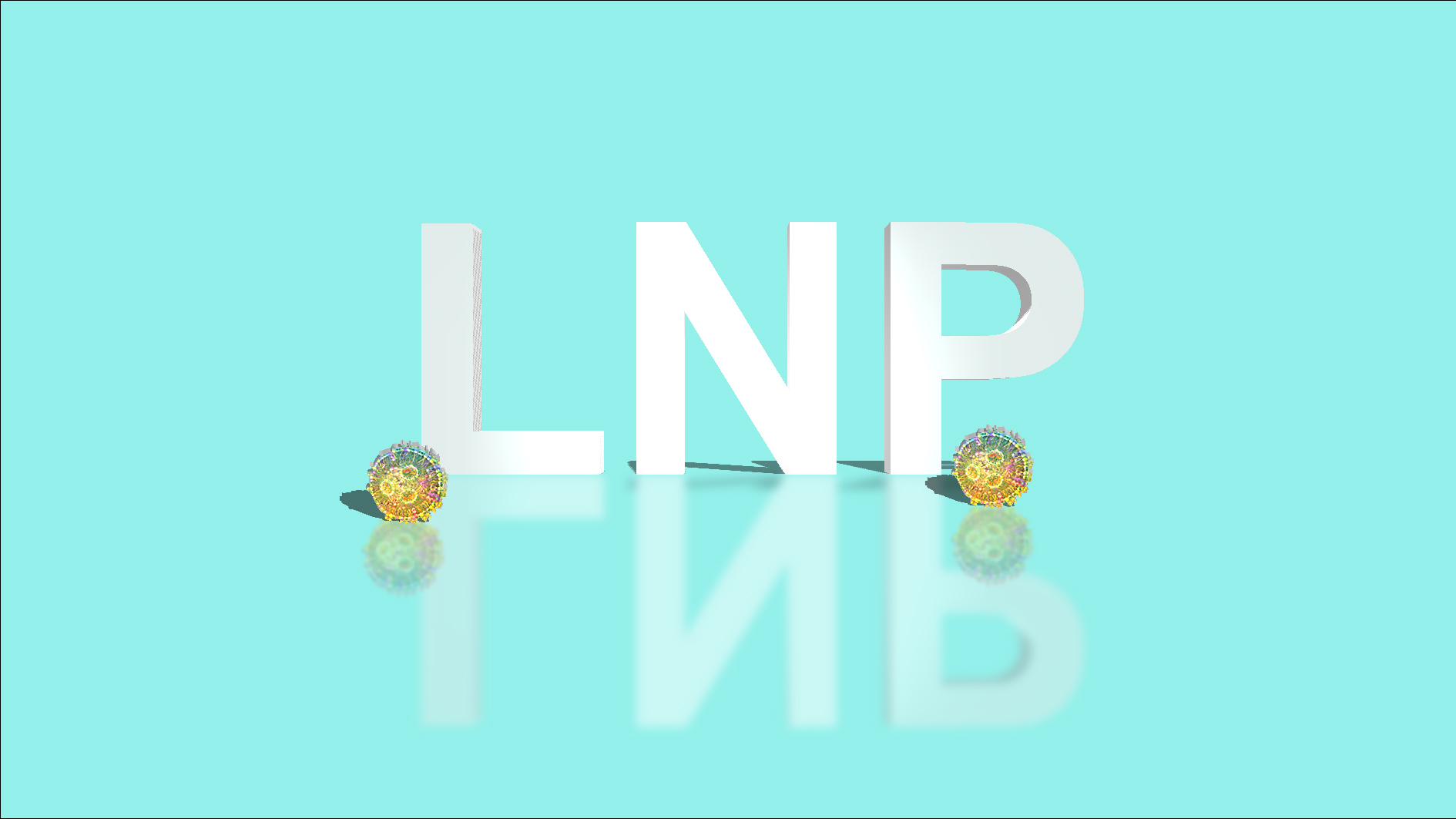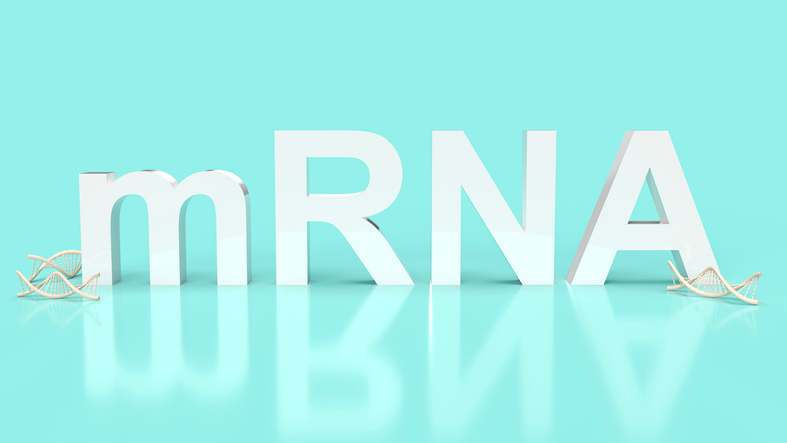PRINCIPLE
Three-dimensional (3D) matrices, such as 3D-scaffolds and 3D-hydrogels,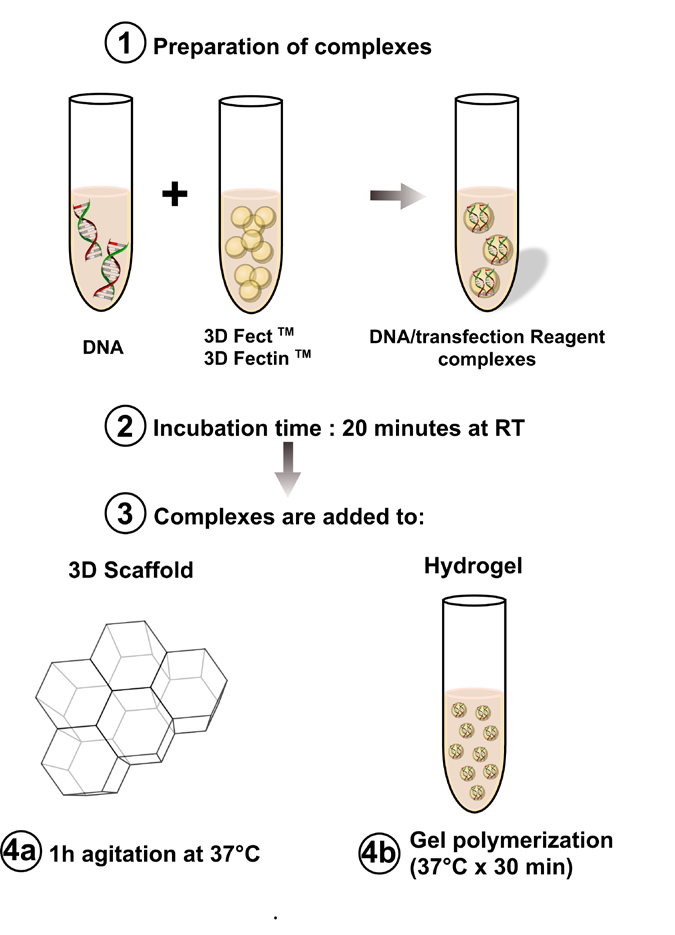
work as mechanical platforms for cell attachment and growth.
Biomaterials, having a viscoelastic support in constant adaptation to external constraints and responding to numerous physiological stimuli, have been designed to mimic the organic milieu for cells.
3D matrices allow cultivating cells in vitro in a more natural way. Therefore, 3-D cell cultures assist the cell physiology analysis under conditions that more closely resemble to an in vivo-like environment compared to conventional 2-D culture. Since last decade, it has been proposed that genetically modified cells growing on-, or embedded in 3D matrices could be used as a drug controlled release system.
Biomaterials for controlled delivery of plasmid DNA or siRNA can thus provide a fundamental tool to target transgene expression (over express or block) or can offer new perspectives for gene or cell therapy.
3D matrices can be composed by numerous materials (collagen, atelocollagen, polymers, hyaluronic acid, fibrin…) which are adapted to specific cell types. Consequently, to transfect cells on a variety of support, OZ Biosciences has developed specific reagents.
HOW DOES IT WORK?
Based on a new technology, the 3D transfection reagents allow to genetically modify cells directly cultured in 3D environment with high efficiency.
3D Transfection allows for a long term transgene expression
(intracellular or secreted) or gene silencing.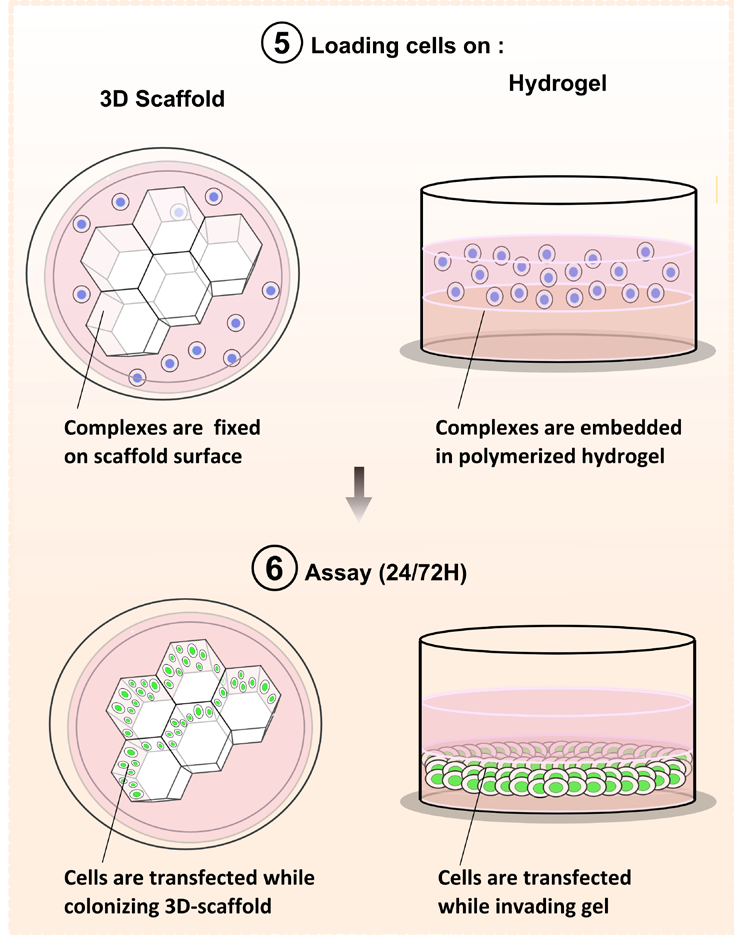
First, the nucleic acids (DNA, siRNA) are mixed with the 3D transfection reagent to form complexes. Then, those complexes are combined with the appropriate 3D matrices. Finally, the modified 3D matrices are colonized by cells to be transfected.
WHAT ARE THE APPLICATIONS AND STUDIES?
Tissue engineering, tissue regeneration, tumor invasion, neural differentiation, cellular polarization, tissue formation, colonization, neurite growth, angiogenesis, tube and acini formation…3D matrices are routinely used in basic research and therapeutic applications. The 3D transfection reagents allow genetic modification of cells directly into or onto the matrices and thus in a more natural environment.
3D-Fect™ and si3D-Fect™ for 3D-Scaffolds
The 3D-Fect™ transfection reagent is specifically designed to bind and cover any kind of 3D scaffold. It is suitable for any nucleic acids such as DNA, shRNA, siRNA and leads to high transfection efficiency. si3D-Fect™ is an optimized reagent for siRNA experiments in combination with 3D-scaffolds.
3D-FectIN™ and si3D-FectIN™ for Hydrogels
The 3D-FectIN™ transfection reagent is compatible with any hydrogel and allows transfecting cells directly cultured onto/into a hydrogel with a high efficiency. It does not alter gelation or polymerization. It is also versatile (suitable for all nucleic acids) and universal (adapted to all cell culture conditions). si3D-FectIN™ is an optimized reagent for siRNA experiments in combination with 3D-hydrogels.
HOW DO I USE 3D-FECTION REAGENTS?
-
Mix the nucleic acid (DNA, siRNA) with the 3D transfection reagent.
-
Add the resulting complex to the 3D support (scaffold or hydrogel).
-
Seed the cells and incubate as usual until evaluation of the transfection efficiency
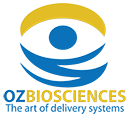
 fluorescent with single strand 2733.jpg)
